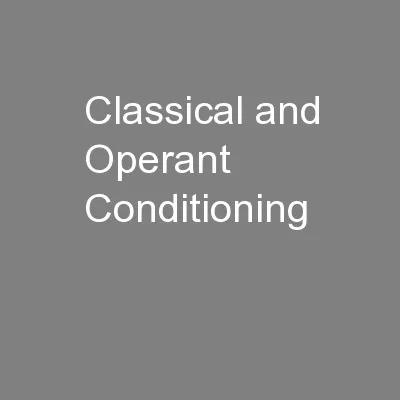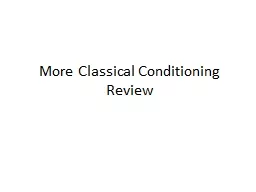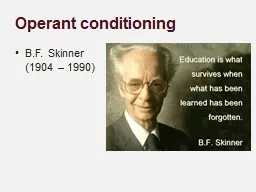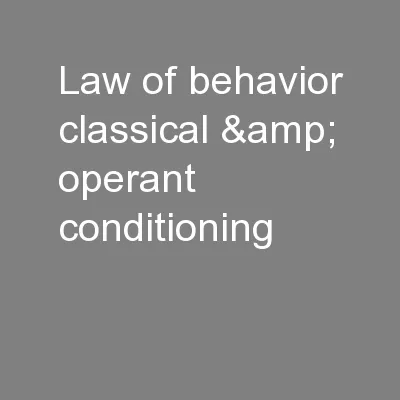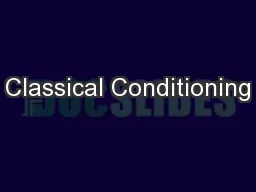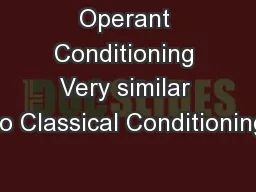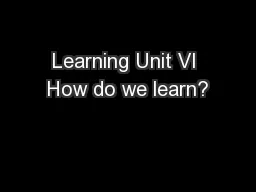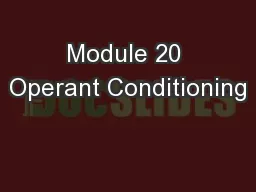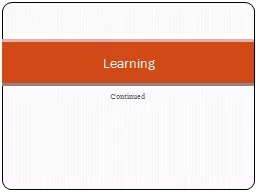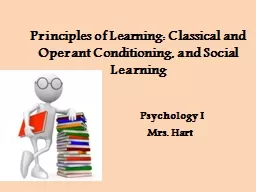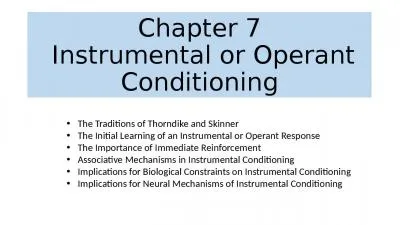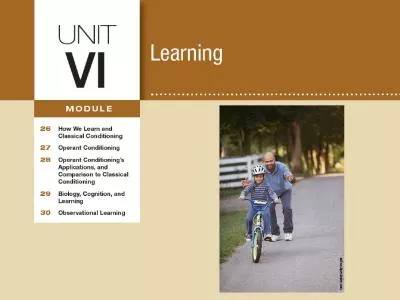PPT-Classical and Operant Conditioning
Author : tawny-fly | Published Date : 2016-09-19
Conditioned Learning Review What is Conditioned Learning Acquiring or changing patterns of behaviour as the result of an environmental stimulus Examples Smile back
Presentation Embed Code
Download Presentation
Download Presentation The PPT/PDF document "Classical and Operant Conditioning" is the property of its rightful owner. Permission is granted to download and print the materials on this website for personal, non-commercial use only, and to display it on your personal computer provided you do not modify the materials and that you retain all copyright notices contained in the materials. By downloading content from our website, you accept the terms of this agreement.
Classical and Operant Conditioning: Transcript
Download Rules Of Document
"Classical and Operant Conditioning"The content belongs to its owner. You may download and print it for personal use, without modification, and keep all copyright notices. By downloading, you agree to these terms.
Related Documents

